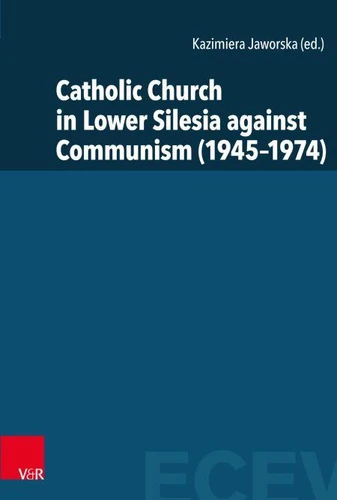Catholic Church in Lower Silesia against Communism (1945–1974)
Par : , , ,Formats :
Disponible dans votre compte client Decitre ou Furet du Nord dès validation de votre commande. Le format PDF est :
- Compatible avec une lecture sur My Vivlio (smartphone, tablette, ordinateur)
- Compatible avec une lecture sur liseuses Vivlio
- Pour les liseuses autres que Vivlio, vous devez utiliser le logiciel Adobe Digital Edition. Non compatible avec la lecture sur les liseuses Kindle, Remarkable et Sony
 , qui est-ce ?
, qui est-ce ?Notre partenaire de plateforme de lecture numérique où vous retrouverez l'ensemble de vos ebooks gratuitement
Pour en savoir plus sur nos ebooks, consultez notre aide en ligne ici
- Nombre de pages280
- FormatPDF
- ISBN978-3-647-57337-3
- EAN9783647573373
- Date de parution17/01/2022
- Protection num.pas de protection
- Taille7 Mo
- Infos supplémentairespdf
- ÉditeurVandenhoeck & Ruprecht
Résumé
Post-war Lower Silesia was intended by the communists to be a "laboratory of socialism". Hence, they developed and pursued a special policy towards the Catholic Church. The book highlights the specificity of the pastoral ministry provided by the successive rulers of the Church in Wroclaw (Karol Milik, Kazimierz Lagosz, Cardinal Boleslaw Kominek) in the realities of the communist state. It shows the role of Cardinal Kominek who was persecuted for his attitude towards communists, his activity in the Polish Episcopate and in the forum of the universal Church.
Moreover, it presents the system of repression aimed at diocesan clergy and religious orders and limiting theological education. With the objective of secularising the Lower Silesian society, the communists put emphasis on promoting their ideology, especially among the young generation. The Church responded with speeches by hierarchs condemning these activities and with pastoral initiatives to slow down the process.
Moreover, it presents the system of repression aimed at diocesan clergy and religious orders and limiting theological education. With the objective of secularising the Lower Silesian society, the communists put emphasis on promoting their ideology, especially among the young generation. The Church responded with speeches by hierarchs condemning these activities and with pastoral initiatives to slow down the process.
Post-war Lower Silesia was intended by the communists to be a "laboratory of socialism". Hence, they developed and pursued a special policy towards the Catholic Church. The book highlights the specificity of the pastoral ministry provided by the successive rulers of the Church in Wroclaw (Karol Milik, Kazimierz Lagosz, Cardinal Boleslaw Kominek) in the realities of the communist state. It shows the role of Cardinal Kominek who was persecuted for his attitude towards communists, his activity in the Polish Episcopate and in the forum of the universal Church.
Moreover, it presents the system of repression aimed at diocesan clergy and religious orders and limiting theological education. With the objective of secularising the Lower Silesian society, the communists put emphasis on promoting their ideology, especially among the young generation. The Church responded with speeches by hierarchs condemning these activities and with pastoral initiatives to slow down the process.
Moreover, it presents the system of repression aimed at diocesan clergy and religious orders and limiting theological education. With the objective of secularising the Lower Silesian society, the communists put emphasis on promoting their ideology, especially among the young generation. The Church responded with speeches by hierarchs condemning these activities and with pastoral initiatives to slow down the process.



